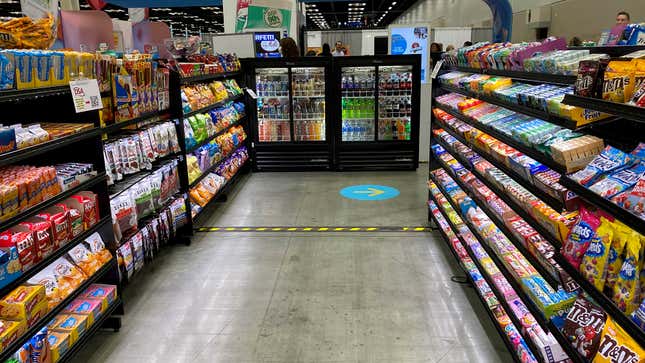
The sweets and snacks industry did not have as disastrous a COVID year as most other food-related businesses. Candy sales, in fact, rose between the spring of 2020 and the spring of 2021, more than 5% for chocolates, and 4% for non-chocolate candy.
“It was more challenging at the beginning,” Chris Gindlesperger, the senior vice-president for public affairs and communications for the National Confectioners Association, told me. “Our number one concern at the beginning was keeping essential workers safe.” Later, the candy industry faced the same supply chain issues as other sectors of the food world. The difference was, people continued to enjoy candy and snacks while at home. They found it comforting.
However, Darren Seifer, an analyst for the NPD Group, a market research firm, actually surveyed people and crunched numbers and declared to an astonished audience that, although the COVID times did see an increase in people eating at home, that trend was already in progress before the pandemic started. COVID merely accelerated it, to the benefit of many companies that produce sweets and snacks. (In 2010, a survey showed that 72% of what NPD calls “snacking occasions” took place at home, while just 28% were away from home; those numbers remained steady throughout the decade until 2020, when they rose to 81% at home.)
“We did really well in the pandemic,” a representative for the Superior Nut and Candy Company told me. “A large part of our business is working with private brands on packaging their products in tubs and jars, and we sold a lot of that to food service, so the pandemic didn’t hurt us.”
Now, Superior is facing the same labor crunch as a lot of food businesses, but that’s not necessarily a bad thing, he said. “So many good things are going to come out of this in the labor movement, and in consumer behavior. And now that the pandemic is over, it’s like a holiday. Business has been crazy.”
Other companies experienced the pandemic differently. “There was a bump at first,” remembers Katherine Tritschler of Ka-Pop!, a Boulder, Colorado, company that produces puffed sorghum snacks. (They taste like Cheetos and are quite addictive.) “But then people stocked up and it leveled off.”
During the lull, Ka-Pop! restructured. Through a CEO support group in Boulder (yes, this was an actual thing), Dustin Finkel, Ka-Pop!’s CEO, met Jeff Schmidgall of Bubba’s Fine Foods. They each realized that their own weaknesses were complemented by the other’s strengths, and they decided to merge. Now the two companies share manufacturing and their own private label. It was very exciting for everyone.
Other products that were set to launch at the canceled 2020 Sweets and Snacks Expo are making their debut now, a year late. Jelly Belly, for example, shipped its chocolate Golden Snitch to stores last year, but it’s only now getting its formal introduction to the sweets and snacks industry. Stuffed Puff, a chocolate-filled marshmallow that took its founder, Mike Tierney, a decade to develop (“It’s patented technology,” a PR rep explained to me. “He won’t even tell me how it works!”), first appeared two years ago, but this is its first appearance at a major trade show. The PR team celebrated by creating a mock campfire in a corner of the booth in order to demonstrate how Stuffed Puff toasts up beautifully into s’mores. (Takeout editor Marnie Shure attempted to roast a Stuffed Puff over a real campfire last weekend and reports that while the exterior got toasted, the chocolate interior remained solid.)
Seifer, the market analyst, predicts that the COVID trend of eating at home will continue, though not at the same level as during the height of the pandemic. The reasons people snack will be changing, though. We’ll no longer be eating as much out of boredom, which makes us reach for the salty snacks, and we’ll be paying more attention to health and wellness. (Food companies discovered during the pandemic that single-portion-sized snacks were doing very well: people wanted an externally imposed limit on mindless snacking.) Bring on the CBD! Bring on the anti-inflammatories! And get yourself back to the convenience store. Your sweets and snacks industry needs you.